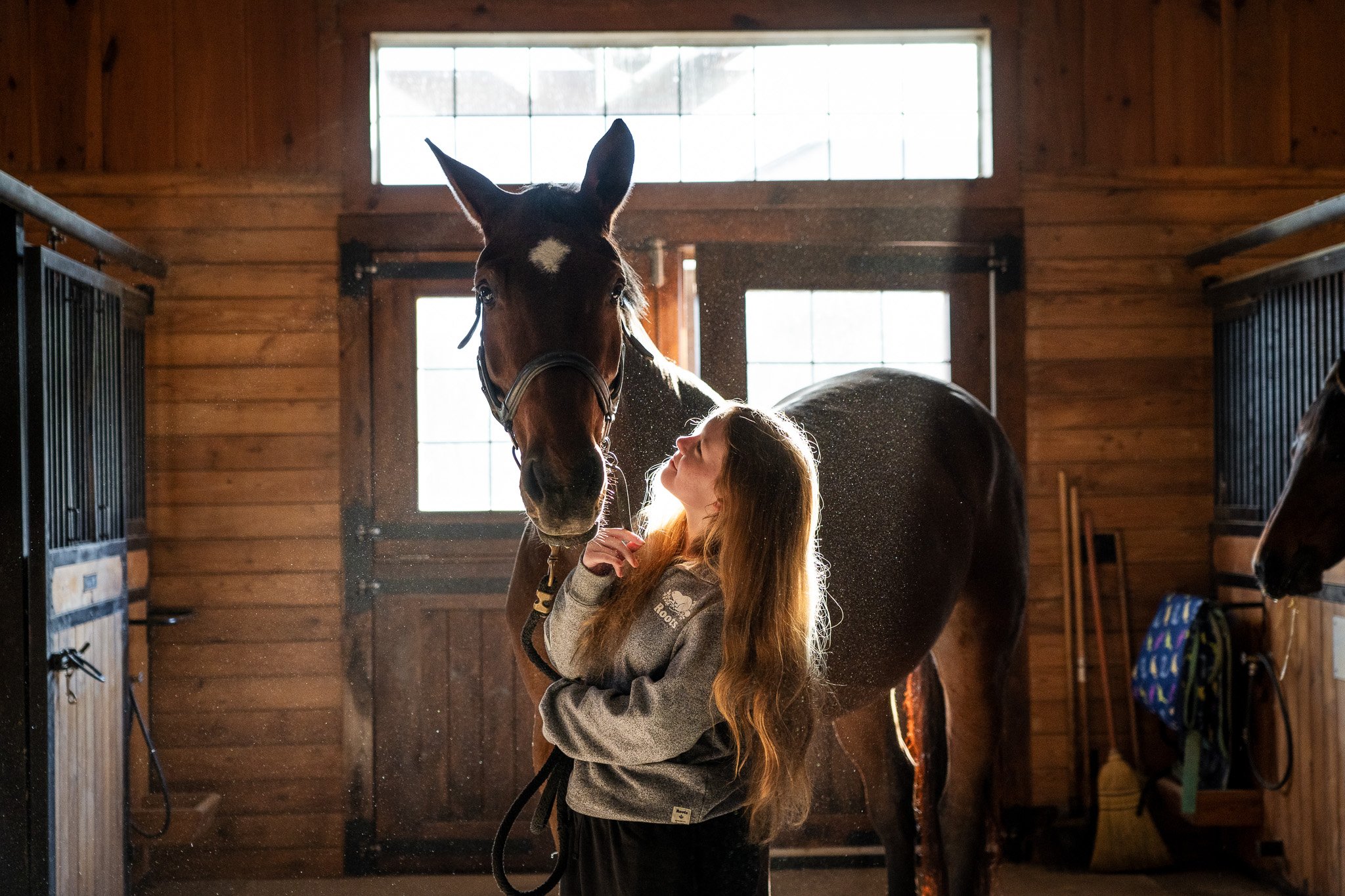How to Photograph Horses
Photographing beautiful animals like horses has always been a sub-genre of photography that I’ve enjoyed. Thankfully, my niece is an equestrian, so I get a fair amount of opportunities to take photos of horses! The one thing I’ve learned, however, is that it’s not easy to take pictures of an animal that wants to run around, eat grass and hay, and avoid posing for photos. I have, however, learned a few tips and tricks over the years for how to photograph horses, and I thought I’d share them here so that, if you’ve ever been interested in photographing these incredible animals, you could give it a go and avoid all of the motion blur shots I inevitably ended up with when I first started. P.S. these tips work for other animals as well!
Camera Lens
Typically for portrait photography, you want to use a classic portrait photography lens, such as an 85mm f1.8 prime lens or even a 50mm lens. While you can certainly use both of those while photographing horses, I found a zoom lens much more practical.
Why? Because horses move around a lot, and they don’t take creative direction very well. This means you need to adjust your framing on the fly. Sure, you can certainly do that using a prime lens by physically moving yourself around, however a zoom lens allows for a bit more versatility and quick adjustments when the horse starts moving around.
I like to use a mid-range zoom when photographing horses. I have a 24-105mm F4, which works well, as it allows me to get some wider shots of the horse, and also some up close, “portrait-style” ones as well. A classic 24-70 f2.8 would be a very solid choice for this type of photography too.
Camera Settings
The first thing to know about photographing horses is that they’re unpredictable. This means that they move around - a lot (as mentioned above). If your shutter speed is too slow, you are going to end up with a lot of blurry horse images. To ensure you get sharp images, make sure your shutter speed is at least around 1/200. This is fast enough to keep things sharp even when the horse moves around. If you’re photographing a horse actually running or jumping, you may want to bump up the speed a bit more just to ensure you are truly able to eliminate any potential movement blur in your photos.
To keep things simple, you could just put your camera in Shutter Speed Priority Mode (the S on your camera) and set it to 1/200, or you could put it into manual mode and really dial in your look. If you’d prefer this method, the next thing you should focus on is aperture. I like to have my lens fairly wide open for horse portrait shots. For my 24-105mm lens, that’s an aperture setting of f4. If you’ve got a faster zoom or prime lens that can open wider, feel free to open it up even more.
The last item to mention here is ISO. Shutter speed is the most important element when photographing horses, so, once you have your shutter speed and aperture set at the appropriate settings, pick an ISO that will keep everything exposed nicely. This will obviously change depending on the setting / weather. For outdoor shots, you’ll likely need an ISO around 100-200. For interior barn shots, you may need to crank the ISO up to 16,000! That’s pretty high, but, with modern cameras, you can actually crank the ISO up pretty high without losing quality or creating a lot of noise.
Lighting
Natural lighting is best when photographing horses, and the same rules apply as they do for people: early morning and evening golden light looks best. Sure, you could use studio lights inside a barn to photograph horses, but I firstly don’t think the horse would like that very much, and, secondly, you are photographing an animal, and the result should be natural. The best way to achieve a natural look is to use natural light.
Now, the way you use lighting when photographing horses is another element. Horses are very muscular and have a lot of details. Having the lighting (usually the sun) aimed straight at them typically washes out a lot of those details. Try playing around with the lighting by having it to the side or even behind the horse. You’ll start to notice the way shadows make certain muscles and details (like their hair and whiskers) pop.
Conclusion
Photographing horses can be a lot of fun, but also a bit tricky due to their unpredictability. To achieve good results, make sure you use a fast enough shutter speed to eliminate any potential motion blur. Also, try using a zoom lens to allow for a bit more versatility, and see if you can utilize the natural sunlight around the barn to your advantage. If you do all of that, you’ll end up with some pretty wild horse photos.

